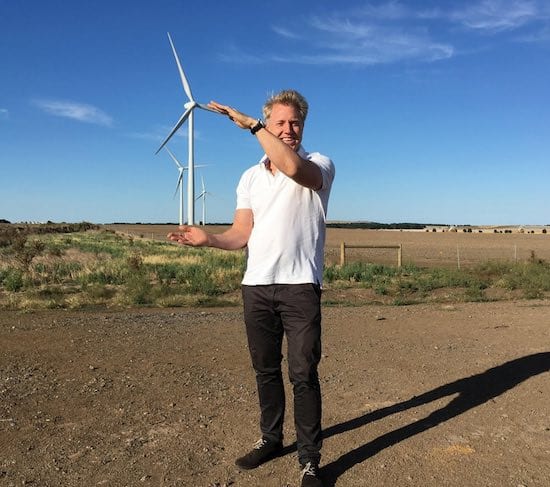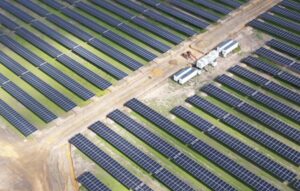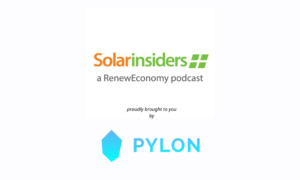
Construction has begun on an 80MW wind farm near Ararat in regional Victoria, marking the fruition of a ground-breaking Melbourne-based bulk buy renewables project developed by a consortium of 14 of leading local universities, cultural institutions, corporations and Councils.
The consortium, known as the Melbourne Renewable Energy Project, alongside project developer Pacific Hydro, said on Friday that ground had been broken at the Crowlands wind farm site, starting with the construction of access roads and bridges.
The milestone comes just months after the project was announced, in November 2017.
Big city purchasing power driving investment and jobs in regional Victoria. With 14 partners, Melbourne Renewable Energy Project has enough power for 17,000+ homes @cityofmelbourne @auspost@RMIT @CitywideAus @NAB @unimelb @pacifichydro @FedSquare #CrowlandsWindFarmSodTurning pic.twitter.com/euG0YFQLQ2
— Arron Wood (@ArronWood) March 22, 2018
As we reported then, the wind farm is underpinned by a unique group purchasing model, that contracts the 14 consortium members to buy a total of 88GWh, or one-third of the assumed output of the wind farm, at an undisclosed price.
Pacific Hydro is the owner operator of the wind farm and its retail arm, Tango Energy, will supply the once the project is completed, in early 2019.
“We will install 39 turbines over the next few months to provide the 88GWh of energy we will purchase; enough to power more than 17,000 households in Melbourne each year,” acting Lord Mayor Arron Wood said.
Led by the City of Melbourne, the MREP partners include the University of Melbourne, RMIT, Federation Square, City of Port Phillip, City of Yarra, Moreland City Council, Bank Australia, Zoos Victoria, Citywide, National Australia Bank, Australia Post, Melbourne Convention and Exhibition Centre and NEXTDC.
For the City of Melbourne, the successful completion of the Crowlands wind farm will see it 100 per cent powered by renewable energy, topping up previous efforts in energy efficiency and rooftop solar installs.
For RMIT, the project will help it meet its emissions reduction goals four years ahead of schedule; while NAB says it will contribute to the bank’s commitment to source 50 per cent of its Australian energy from renewable sources, by 2025.
The City of Yarra, meanwhile, has committed to sourcing 100 per cent of Council’s electricity through the project.
Any excess power that’s generated will feed back into the grid and be used by businesses and households across south eastern Australia, improving supply and affordability for all customers.
“This is the first project of its kind in Australia. No other renewables project has tackled the complexity of 14 partners in one buying group,” said Wood, who has been a chief architect and passionate leader of the project.
“This is an innovative, cost-effective approach to creating and purchasing renewable energy and also a great example of how a major city with a $92 billion economy can influence positive outcomes in our regional towns.”
For Pacfic Hydro, their business in the town of Crowlands will not stop at the wind farm.
The Australian renewables developer is also slated to install rooftop solar and battery storage at the Crowlands Town Hall – a project that will be funded through their Community Investment Program.
“Melbourne is leading the nation in responding to climate change, reducing our carbon footprint, building resilience and increasing our urban biodiversity,” Wood said in comments on Friday.
“We have already reduced our operating costs by $1 million in annual electricity savings with our energy efficiency and solar projects.”
And he expected MREP to be replicated all over Australia, by like-minded consortia, going direct to market to purchase their renewable energy.
“Several big corporates have already announced power purchase agreements and that number will continue to climb,” Wood said.








